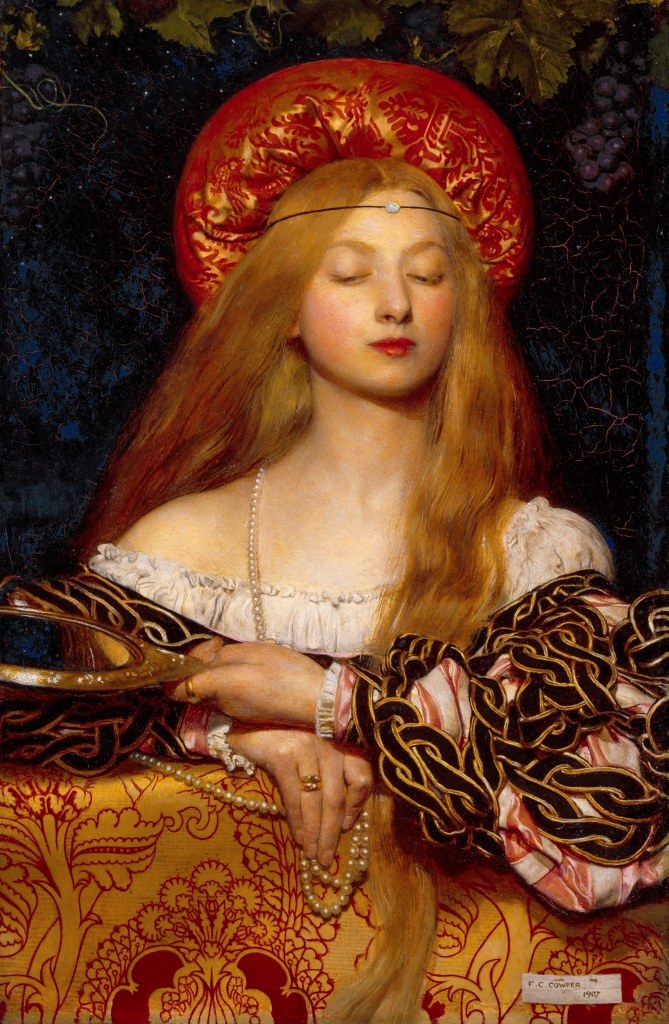
The subject matter and composition of ‘Vanity’ are derived from Italian Renaissance painting. Cowper has bedecked his youthful beauty with jewels and given her a hand-mirror to signify vanity. She stands before a vine, heavy with ripe grapes, suggestive of abundance and pleasure. Although this painting is secular in subject, the pose of a woman leaning on a covered parapet is reminiscent of Renaissance imagery of the Virgin and Child.
Although Cowper did not belong to a particular artistic group this, like many of his paintings, relates to the work of artists now known as ‘Second Generation Pre-Raphaelites’. Decorative and richly coloured, ‘Vanity’ suggests the romance of the past and alludes to notions of the chivalric and courtly love.
The detailing of the luxurious fabrics relates to a renewed interest in the applied arts and crafts, which emerged late 19th century British art. The elaborate serpentine design on the woman’s dress may have been inspired by the portrait of Isabella d’Este attributed to Giulio Romano (Historic Royal Palaces). Edward Burne-Jones had also depicted such a design in his watercolour ‘Sidonia von Bork’ (1860; Tate Britain).
Source